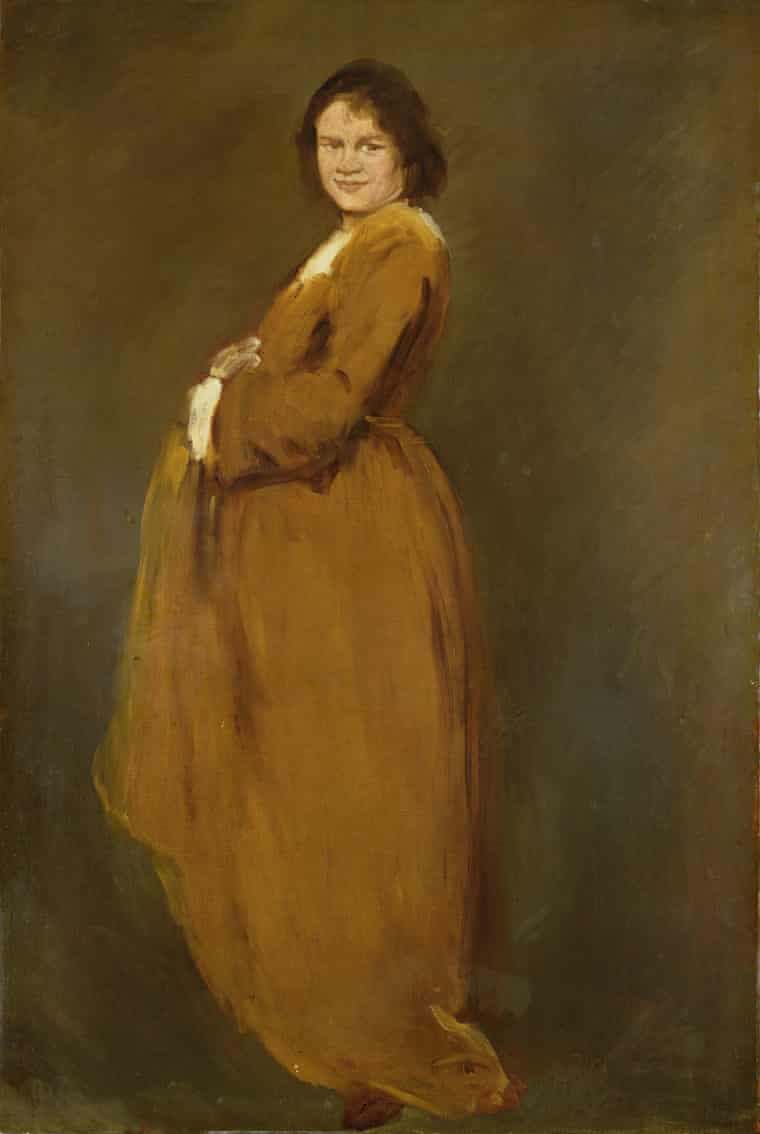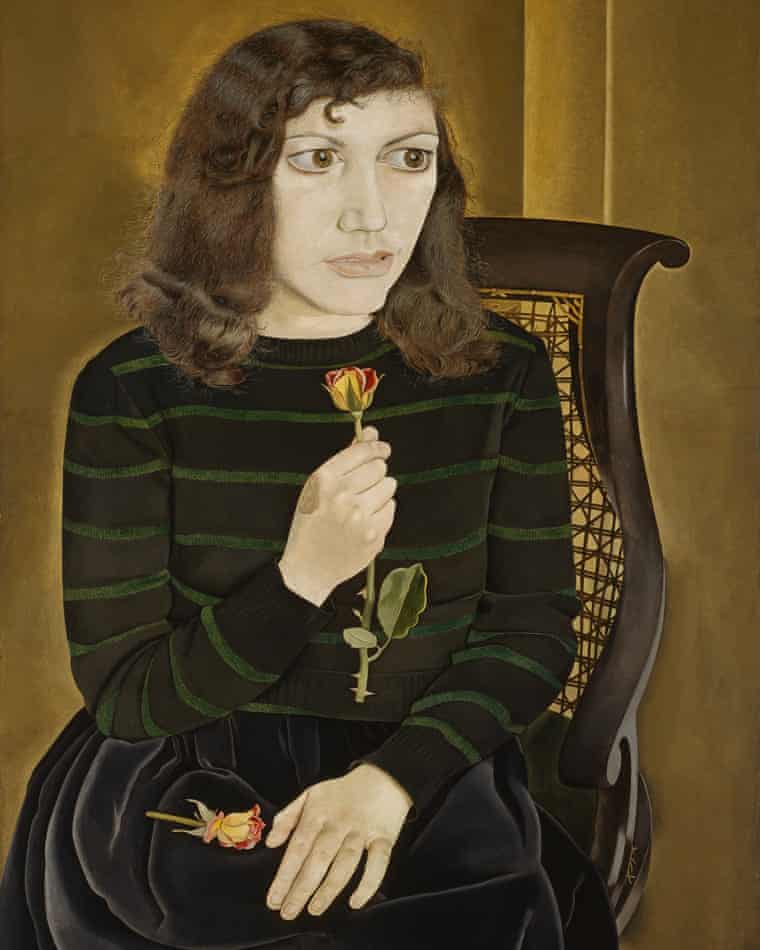
Art
Great expectations: art's struggle to depict pregnancy
From the Virgin Mary to Demi Moore, art history swells with iconic mums-to-be. But can a single image ever do justice to such a head-scrambling state of flux – especially one made by a man?
by Lara FeigelPregnant. A single word has to capture so many states. There’s early pregnancy, with its peculiar secret knowledge of change. The nausea, the exhaustion, the understanding that multiplying cells are forming themselves into the shape of lentils, hazelnuts, plums; the fear (or hope) of miscarriage; the strange, triumphant certainty of the heartbeat, beamed into the consulting room – that first call from a creature who is telling you that in eight, seven, six months, it will be there to claim you, your child. And all the while, your body appears unchanged. Historically, many women didn’t even know they were pregnant at this stage.
Then, months later, there’s the weight, pushing down hard against your back, your ribs, your bladder. There are the kicks – charming flutters that become more insistent, reminding you that this will become a child with needs, a child whose shouts of “Mummy” will become impossible to ignore, rousing you to provide food, help or the finding of lost things. And all along, the changes are not month by month, not even week by week, but hour by hour. Why is it that at one moment a foot protruding outwards can bring a contented feeling of companionability but an hour later can feel more like an invading alien – stealing your iron, your nutrients, your warmth. No wonder that, as an adjective, we use “pregnant” to mean “full of meaning”.

So how do you represent so fluctile a state in art? Susan Hiller did it, with matter-of-fact clarity, by taking day-by-day photographs of her growing belly, in her 1977 work Ten Months. Many artists have recorded single moments, but the best find some way to suggest movement and change. We can see an impressive selection of the British artists who have attempted it across the centuries in Portraying Pregnancy at the Foundling Museum in London. The exhibition, curated by Karen Hearn, takes us from the Medieval Books of Hours, with their depictions of the Virgin Mary’s pregnancy, to Annie Leibovitz’s iconic naked photographs of Demi Moore and Serena Williams in Vanity Fair.
Historically, the majority of these images were made by men, which opens up the question of who pregnancy belongs to: this state where women are filled with both agency and vulnerability seems to put them unusually at the mercy of the male gaze. The women are sometimes serene, as in Hans Holbein’s wonderfully delicate 1527 drawing of Cecily Heron, daughter of Thomas More; sometimes smug, as in Peter Lely’s 1664 portrait of Charles II’s mistress Barbara Villiers, garbed as the Virgin Mary, pictured pregnant while holding a cherubic floating toddler aloft, intended to advertise the king’s saintliness and fertility.
But it may be the male portraitist’s feelings we’re seeing – especially when he’s the father of the child. It can be tough, when you’re pregnant, hearing a partner describe your state. I remember being unreasonably maddened, months later, by my husband’s announcement that the birth had gone well for me, at a point when every hour of labour still felt painfully present and was still playing out in my mind.
I felt something of this, too, in early pregnancy with my first child. The jubilant privacy of being alone with this new person got mixed up with how indescribably awful the exhaustion and the nausea could become. Other people’s descriptions sometimes felt as if they were trying to take the experience away from me, even when they were sympathetic and nuanced. Early on, I was also frightened that talking about it might somehow jinx it, because these peculiar changes were so invisible that I couldn’t quite believe a baby would follow.
So to be painted looking mutinously glum – as Kitty Garman was by Lucian Freud in 1947, a year before their marriage – may not be very welcome. It’s an extraordinary picture though. Garman, pregnant with their daughter Annie and draped in swathes of black velvet, is clutching a rose and seems to be staring white-faced into the future with a kind of electrifying foreboding. This is a moment of taking in the reality of change: presumably for the painter, as much as the sitter.

More pleasing, I find, is Augustus John’s portrait of his wife Ida, pregnant with her first child in 1901. They’d recently married and were enjoying domestic life, though Augustus had already hinted that he wasn’t going to consider himself overly constrained by domesticity. And Ida, while lovingly acquiring baby clothes by day, was experiencing the baby as a monstrous invader by night: “I dreamt last night that the baby came – an immense girl, the size of a two-year-old child – with thick lips, the under one hanging – little black eyes near together and a big fine nose. Altogether very like a savage – and most astonishing to us.”
In Augustus’s portrait, Ida leans backwards, showing off her belly. She glances sideways at the painter, appearing partly amused, partly irritated. It’s a look that tells him he can’t possibly understand. There’s a pleasure – even a three-way complicity between Augustus, Ida and the viewer – in seeing him take this in. Augustus knew that Ida’s life was about to get harder. And, imminently, there was the danger of death in childbirth. About five of every 100 births still resulted in death at the turn of the century. Today, it’s hard to recapture the feeling of terror this must have brought on, but the danger of childbirth emerges as a theme in this exhibition. There are several subjects here who didn’t survive the ordeal.
Most historically significant among these is Princess Charlotte Augusta of Wales, painted in 1817 by George Dawe while pregnant with the child who would have succeeded her as heir to George IV’s throne. She sits in regal splendour looking away from the viewer, not yet visibly pregnant but wearing a silk blue tunic (that has survived and is included in the exhibition). The baby was stillborn, and the mother died shortly after. It was because of this that George was succeeded by his younger brother, William, and we ended up with Queen Victoria.

Perhaps unsurprisingly – perhaps because I trust them more – I found it was the female artists here who had most to say. The exceptions are the medieval and early-modern portraits of the Visitation: that moment in the Bible when the Virgin Mary, pregnant with Jesus, visits her cousin Elizabeth, pregnant with John the Baptist. At the sound of Mary’s greeting, Elizabeth apparently felt her baby quicken in her womb and representations usually depict the two women touching each other’s bellies, comparing flutters. It’s an affecting moment that speaks easily across centuries and cultures, humanising these women and their changing bodies, bringing out the volatility of pregnancy: here, now, a moment of change.
In more recent times, two of the women included here get across the strange flux of pregnancy very powerfully. In Chantal Joffe’s 2004 self-portrait, we can still see the paint dripping, changing colour as it dries. There’s a provisionality to the lines and shapes that suggests we’re seeing a painting in the act of being made, just as we’re seeing a body in the act of being formed. “Being pregnant,” Joffe says, “was like, ‘Wow, how brilliant to paint yourself changing so much.’” Even the spotted mismatched underwear has a carelessness that suggests this is a moment about to be succeeded by others.
In Jenny Saville’s 2012 Electra, lines and bodies multiply before our eyes. Saville gave birth to her first child in 2007, drawing herself throughout pregnancy and having herself photographed during the birth. She had always celebrated the bodies of women – bruised, contorted or mutilated – in portraits that owed something to Lucian Freud’s images of female fleshiness. Here she made the most of the opportunity to represent growth, layering images on top of each other. “You’re literally reproducing yourself when you’re pregnant,” she says, “like the way the lines reproduce themselves.”
Electra was originally a drawing of one pregnant woman, but then Saville added a larger figure, clutching a child. It is unclear whose limbs are whose, and it seems possible that there are more people hidden amid the mass of charcoal lines. It’s an image of fleshy fecundity that’s both terrifying in its unstoppability and ecstatic in its profusion of touch. She takes charge of Freud’s imagery and makes it more fully yielding. As in the Visitations, there are hands at the centre of this picture, made all the more striking because they are gripped on to naked flesh. This is pregnancy and motherhood without serenity, without smugness, but given tenderly embodied form.
- Portraying Pregnancy is at the Foundling Museum, London, until 26 April. Lara Feigel is the author of Free Woman: Life, Liberation and Doris Lessing.